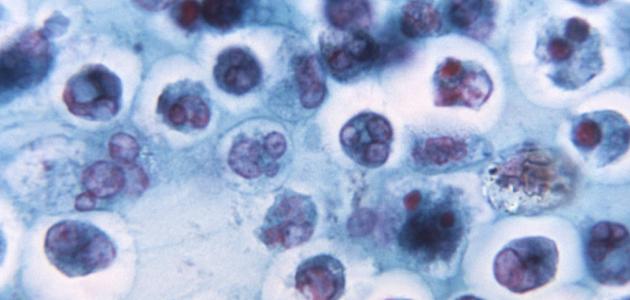Internal bleeding in the head
Intracerebral hemorrhage (ICH) is a type of stroke that results from bleeding of small blood vessels in the brain. This type of bleeding occurs as a result of high blood pressure in the tiny arteries that supply the brain with blood, nutrients, and oxygen. High blood pressure causes the thin walls of these arteries to rupture, which leads to bleeding inside the brain.As a result of the accumulation of clotted blood and fluid, pressure increases on the brain, which may lead to brain compression or herniation.As a result of the rupture of the walls of the artery, the area fed by that artery becomes deprived of oxygen-rich blood , which leads to the death of that region and swelling of the brain.The brain may push down as a result of increased pressure on it through the small hole at the base of the skull called the foramen magnum, and the parts of the brain that come in direct contact with the bone can be compressed around This hole is such that it stops working, and since these brain regions control breathing and heart rate, this could lead to death.
Symptoms of internal bleeding in the head
Symptoms of internal bleeding in the head can vary depending on the location and severity of the bleeding, and the amount of tissue affected. Symptoms may develop suddenly or over time, and they may worsen gradually or suddenly. Brain bleeding is an emergency medical condition that requires immediate medical attention. Symptoms of internal bleeding in the head include:
Read also:Hernia symptoms- Suffering from severe and sudden headache.
- Having seizures for the first time without a previous history of seizures.
- Feeling of weakness in an arm or leg.
- Nausea or vomiting.
- Lethargy and lack of alertness.
- Vision changes.
- tingling or numbness
- Difficulty speaking or understanding speech.
- difficulty swallowing;
- Difficulty writing or reading.
- loss of fine motor skills such as; Manual tremors.
- Loss of balance.
- An abnormal sense of taste.
- Unconsciousness.
Causes of internal bleeding in the head
Internal bleeding in the head can occur due to one of the following reasons:
- Head trauma such as from a fall, car accident, sports accident, etc.
- High blood pressure that causes the walls of blood vessels to rupture.
- Blockage of an artery in the brain by a blood clot formed in the brain or traveling to the brain from another part of the body, leading to blood leakage from the damaged artery.
- ruptured cerebral aneurysms; As a result of a weak point in the wall of blood vessels, which causes them to burst.
- Accumulation of amyloid protein within the walls of arteries in the brain, which is known as cerebral amyloid angiopathy.
- Bleeding from abnormally formed arteries or veins, which is known as an arteriovenous malformation.
- Use of anticoagulant medications such as; blood thinners
- Smoking, excessive drinking, or drug use such as cocaine.
- Complications related to pregnancy or childbirth, including eclampsia or postpartum vasculopathy.
Types of internal bleeding in the head
Internal bleeding in the head is divided into several types as follows:
Read also:Hernia symptoms- Epidural hematoma: (English: Epidural hematoma), a hematoma is defined as a collection of clotted blood outside a blood vessel. An epidural hematoma is caused by the accumulation of blood between the skull and the outer coverings of the brain. Most cases of epidural hematoma result from a head injury with a skull fracture. Epidural hematoma is characterized by a brief loss of consciousness and its subsequent recovery.
- Subdural hematoma: Subdural hematoma: A subdural hematoma is a collection of blood on the surface of the brain. It usually occurs as a result of the head moving quickly forward and stopping, and this type of bleeding inside the head is more common in the elderly and people who drink large amounts of alcohol.
- Subarachnoid hemorrhage: Subarachnoid hemorrhage: This type of hemorrhage occurs as a result of bleeding between the brain and the thin tissues that cover the brain, known as the meninges. Trauma is the most common cause of this type of bleeding inside the head, and it may occur due to the rupture of one of the main blood vessels in the brain, such as: intracerebral aneurysm. This type of bleeding is characterized by a sudden, severe headache that precedes this type of bleeding, and symptoms also include loss of consciousness and vomiting.
- Intracerebral hemorrhage: Intracerebral hemorrhage is the most common type of intracerebral hemorrhage. A prominent warning sign for this type of hemorrhage is the sudden onset of neurological deficits.
Prevention of bleeding inside the head
Following the following tips can reduce the risk of bleeding inside the head:
Read also:Breast enlargement in men- Wear seat belts in cars or helmets when riding bicycles or motorcycles to protect the head area.
- Make some lifestyle changes to reduce the risk of a stroke or bleeding in the brain in people who have had a previous bleeding or stroke.
- Monitor blood pressure periodically for people with high blood pressure.
- avoid smoking; Cigarette smoking is a major risk factor for stroke, as nicotine and carbon dioxide cause numerous damages to the cardiovascular system. Also, women who smoke and use contraceptives have an increased risk of stroke.
- Maintaining the level of blood sugar in patients with diabetes, in addition to the importance of controlling blood pressure, cholesterol, and weight.
- Get 30 minutes of exercise most days of the week.
- eating a healthy diet; This is done by reducing foods that are high in saturated fats, trans fats and cholesterol.









